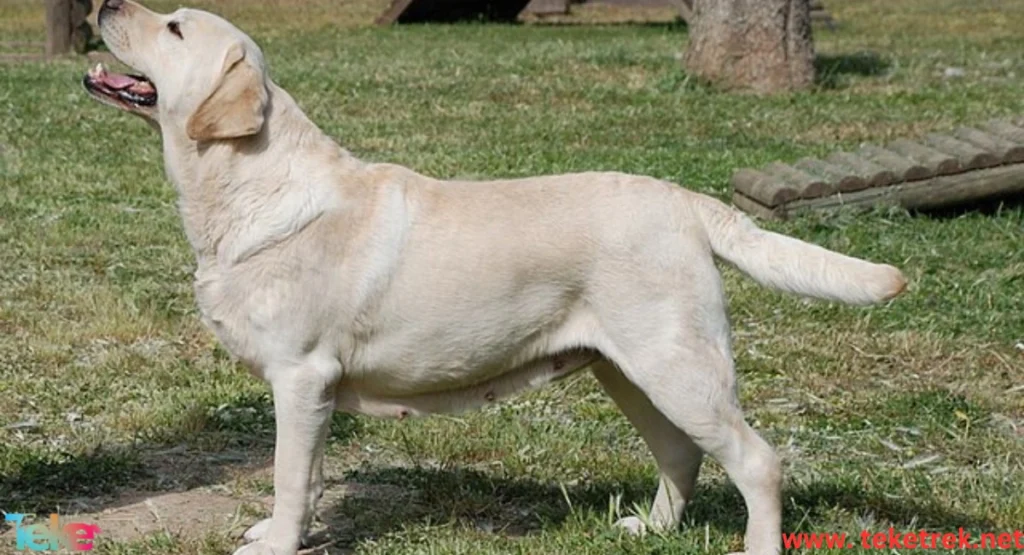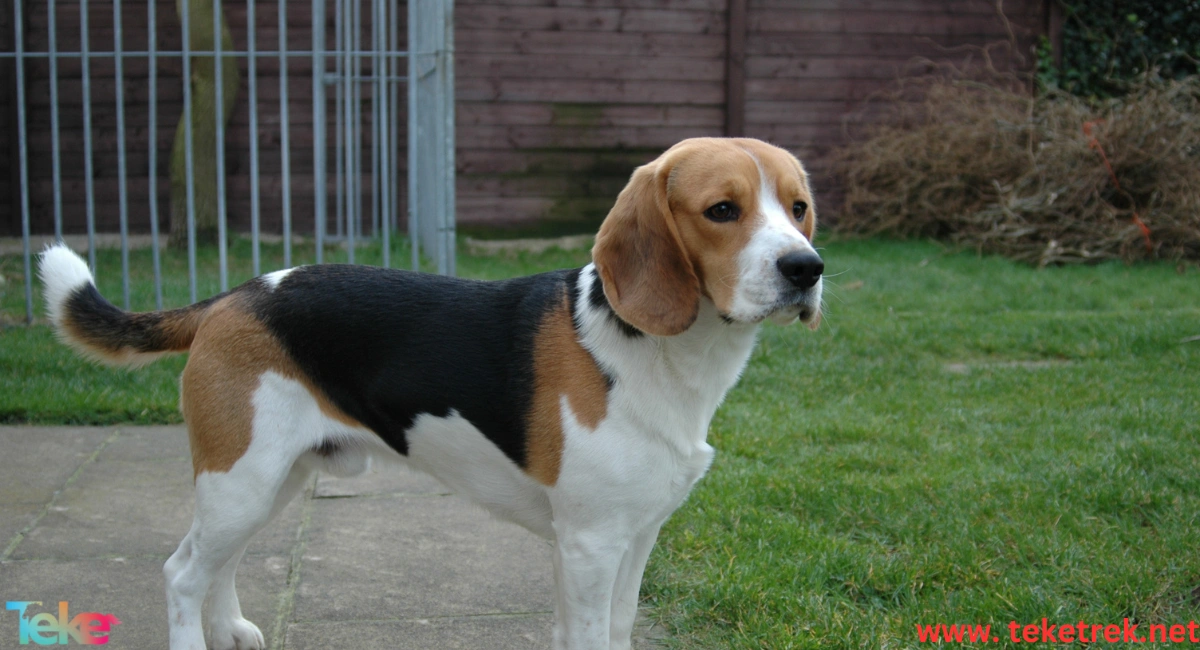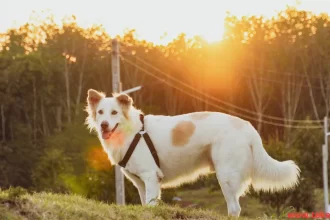Kuwait’s climate, characterized by extreme heat, requires careful consideration when choosing a dog breed. Selecting a dog that can easily adapt to local conditions is crucial for its safety and the owner’s peace of mind.
In this article from teketrek, we will explore dog breeds that thrive in hot, dry environments, focusing on those with short hair, effective cooling mechanisms, and exercise needs suitable for Kuwait’s climate.
Reasons to Choose Suitable Dog Breeds for Kuwait’s Climate
When choosing dog breeds for Kuwait’s hot climate, it is essential to select breeds that tolerate high temperatures and desert conditions. Avoid breeds with thick fur and double coats, as they are prone to overheating. It is also preferable to choose breeds with moderate energy levels since high temperatures can affect their activity.
The main reasons for choosing dog breeds suitable for Kuwait’s climate include:
- Heat tolerance: Breeds such as small hunting dogs (like Beagle and Boxer) and light-coated dogs like Dalmatians and Italian Greyhounds adapt well to hot climates.
- Energy levels: It is better to choose breeds with moderate energy levels, as high temperatures can reduce their activity. Breeds like the large German Shepherd and Scottish Terrier require a lot of exercise and may not be the best choice in Kuwait’s climate.
- Behavior and training: Some breeds may be more prone to anxiety or nervousness in high temperatures. Calm and obedient breeds such as Labrador Retrievers and Golden Retrievers are preferable.
- Dog health: Some breeds are more vulnerable to specific health issues in hot climates, such as respiratory or heart problems. Generally healthy breeds should be prioritized.
- Legal restrictions: Kuwait may impose restrictions on importing or owning certain dog breeds. It is essential to check local laws before choosing a breed.

Basic Criteria for Choosing a Dog Suitable for Hot Weather
To choose a dog suitable for living in hot weather, several key criteria must be considered, including the dog breed, coat length, activity level, and ability to adapt to high temperatures. Breeds with short or medium coats, good heat tolerance, and moderate activity levels are preferable to avoid heat stress problems.
Important criteria for choosing a dog suitable for hot weather include:
- Dog Breed:
- Short or medium coat breeds: such as Labrador, Beagle, Poodle, Jack Russell, and Pomeranian often adapt better to hot climates.
- Avoid thick and long coat breeds: such as Bernese Mountain Dogs, Alaskan Malamutes, and Huskies, which are more susceptible to heat stress.
- Short or medium coat breeds: such as Labrador, Beagle, Poodle, Jack Russell, and Pomeranian often adapt better to hot climates.
- Coat Length:
- Short coats: help regulate body temperature in hot weather conditions.
- Long coats: may require special care in summer, like regular grooming, to avoid overheating.
- Short coats: help regulate body temperature in hot weather conditions.
- Dog Activity Level:
- High activity dogs: such as Border Collies, may need exercise in early morning or evening to avoid heat stress.
- High activity dogs: such as Border Collies, may need exercise in early morning or evening to avoid heat stress.
- Dog Size:
- Small dogs: may be more prone to dehydration due to their small size, so constant access to water is important.
- Small dogs: may be more prone to dehydration due to their small size, so constant access to water is important.
- Dog Care:
- Avoid walking during peak heat hours: walk the dog early in the morning or late evening to avoid the intense sun.
- Provide shade: ensure there is a shaded area for the dog to rest and relax in hot weather.
- Check hot pavements: before walking the dog, test the pavement temperature by placing the back of your hand on it for seven seconds; if it’s too hot for you, it’s too hot for the dog’s paws.
- Avoid walking during peak heat hours: walk the dog early in the morning or late evening to avoid the intense sun.
In addition to these criteria, it is also important to consult a veterinarian for more advice on choosing a dog suitable for hot weather.
Everything you need to know about the tiger shark: habitat, behavior, diet, and reproduction
Basenji Breed: The Quiet Companion
The Basenji is a distinctive African dog breed known as the “barkless dog.” This breed has a unique voice box that prevents it from barking, instead producing a sound similar to yodeling. The Basenji is an active and playful dog, requiring plenty of exercise and mental stimulation to avoid destructive behavior.
Basenji breed features:
- Voice: Instead of barking, the Basenji makes a unique yodel-like or laughing sound.
- Activity: Needs plenty of daily exercise to meet its active needs, according to dog info sources.
- Independence: Known for independent thinking and may not always obey commands.
- Health: Prone to some health issues like progressive retinal atrophy and Fanconi syndrome.
- Rarity: The Basenji breed is rare and can be hard to find.
Chihuahua: Small Size and Easy Adaptation
The Chihuahua is the smallest dog breed in the world, famous for its playful and friendly personality, and ability to adapt to various environments, including apartment living. Chihuahuas are small and highly adaptable dogs.
Chihuahua traits:
- Size: Small-sized, weighing between 2 to 6 pounds (about 1 to 3 kilograms).
- Personality: Playful, loyal, intelligent, and independent.
- Adaptability: Easily adapts to various environments, including small apartments.
- Care: Requires some grooming, especially for long-haired varieties.
- Training: Easily trainable with positive reinforcement and patience.
The Arabian Saluki: Natural Desert Adaptation
The Saluki, also known as the Persian Greyhound or Egyptian Royal Dog, is an ancient hunting dog breed known for its speed, agility, and hunting skills, especially in chasing fast prey like gazelles. Originating from the Middle East, these dogs were highly valued by Bedouin tribes for their hunting abilities and are now beloved companions.
Key characteristics:
- Hunting heritage: Salukis were originally bred for hunting, using sight rather than scent to track and chase prey.
- Appearance: Medium-sized, slim, muscular, with smooth fur and feathering.
- Temperament: Known for their gentle and noble nature, loyal and affectionate with families but may be reserved with strangers.
- Exercise needs: Require a good amount of exercise, including running.
- Coat care: Feathered Salukis require more grooming than smooth-coated ones to prevent matting.
A comprehensive guide to rabbitfish: its characteristics, habitat, and dangers
Can You Keep a Labrador or Golden Retriever in Kuwait?
Yes, it is possible to keep Labrador Retrievers and Golden Retrievers in Kuwait. Both are popular and beloved dog breeds in Kuwait and are available for sale or adoption in many places.
Where to find Labradors and Golden Retrievers in Kuwait:
- Auctions and websites: Dog classifieds like Souq Kuwait Open frequently list dogs for sale or adoption.
- Veterinary clinics and centers: Ads for dogs for sale or adoption may be available.
- Animal shelters: Labradors and Golden Retrievers can be found in shelters and may be available for adoption.
- Friends and family: Sometimes friends or family may have dogs for sale or adoption.
- Social media pages: Pet-related social media groups may post dogs for sale or adoption.

How to Provide a Comfortable Indoor Environment for Your Dog
To provide a comfortable indoor environment for your dog, you should offer a designated space, a comfortable bed, toys, and a safe area to move around. Also, maintain cleanliness, provide enough food and water, and regularly play with the dog.
Here are the details:
- Safe Shelter: Dedicate a specific area in the home where the dog can retreat when anxious or needing rest. This place should be comfortable, with a bed or cushion, and favorite toys.
- Comfort: Ensure the bed is comfortable and warm, preferably with a blanket or cushion carrying the owner’s scent to provide security.
- Toys: Provide a variety of toys that stimulate the dog mentally and physically, like balls, chew toys, and interactive toys.
- Space: Ensure the dog has enough room to move freely indoors, and that the space is safe and hazard-free.
- Cleanliness: Keep the dog’s area clean and change bedding regularly.
- Food and Water: Always ensure the dog has access to clean food and water.
- Care: Dedicate time for play and interaction, and give the dog the attention and care it needs.
- Training: Train the dog to use a designated bathroom area, and reinforce good behavior with rewards.
- Safety: Ensure the home is safe for the dog, with no toxic materials or objects it could harm itself with.
- Socialization: Expose the dog to various social situations and provide opportunities to interact with other pets and people.
Tips for Outdoor Care and Exercise in Hot Weather
To ensure the safety and comfort of dogs in hot weather, follow these tips:
- Avoid hot surfaces: Do not let your dog walk on hot surfaces like asphalt or sand, which can burn their paws.
- Do not leave the dog in the car: Never leave your dog alone in a car in hot weather, even with windows open, as temperatures rise quickly inside.
- Avoid strenuous exercise: Avoid heavy exercise during hot weather; prefer exercising early morning or evening when it is cooler.
- Use sunscreen: If your dog spends time in the sun, apply pet-safe sunscreen.
- Be cautious with older dogs: Older dogs or those with short noses are more prone to heatstroke.
- Provide shade and water: Always have shaded areas and fresh water outside.
- Avoid peak heat hours for walking: Walk your dog early or late in the day when it is cooler.
- Substitute walking with indoor activities: If it’s too hot, replace walks with indoor games like fetch or obstacle courses (as recommended by Texas A&M University).
- Swimming: If your dog enjoys water, take them swimming in a safe area.
- Adjust activity levels: Reduce exercise intensity and duration in hot weather to prevent heat stress.
Additional Dog Breeds Suitable for Kuwait’s Climate
Here are some more dog breeds that handle heat well and can live comfortably indoors with proper care:
- Dalmatian: Known for their short coat and energetic personality, Dalmatians tolerate heat fairly well but need regular exercise during cooler times.
- Whippet: Similar to Greyhounds, Whippets have short coats and lean bodies that handle heat better than thick-coated dogs.
- Jack Russell Terrier: Small, active, and adaptable, they do well in warmer climates but require mental and physical stimulation.
- Boxer: Short coat and medium size, Boxers can adapt to heat but should not be over-exercised in high temperatures.
- French Bulldog: Short-nosed and muscular, they can be sensitive to heat but live well indoors with air conditioning and limited outdoor exposure.
How to Keep Your Dog Healthy and Happy in Kuwait’s Climate
- Hydration: Always provide fresh and clean water. Dogs lose a lot of fluids in hot weather through panting.
- Cooling Methods: Use fans, air conditioning, cooling mats, or damp towels to help cool your dog during the hottest hours.
- Grooming: Brush his fur regularly to remove dead hair and improve air flow in the pores. For long-haired breeds, trim fur in summer but avoid shaving completely as the coat also protects from sunburn.
- Regular Vet Checkups: Heat can exacerbate health issues; monitor your dog’s health with regular vet visits.
- Watch for Signs of Heatstroke: Heavy panting, drooling, weakness, vomiting, or collapse require immediate veterinary attention.
Indoor Activities for Your Dog
Due to the extreme heat in Kuwait, outdoor activities during the day are limited, so internal stimulation is essential:
- Puzzle toys: Great for mental stimulation.
- Training sessions: Teach new tricks or commands.
- Hide and seek: Hide treats or toys around the house.
- Interactive games: Tug-of-war or fetch with soft toys.
Final Thoughts
Choosing the right dog breed for Kuwait’s climate is vital for the well-being of your pet. Short-haired, heat-tolerant breeds that adapt well to indoor life are the best options. Always provide proper care, hydration, shade, and exercise during cooler hours. Consult your veterinarian for personalized advice to keep your dog healthy and happy.





